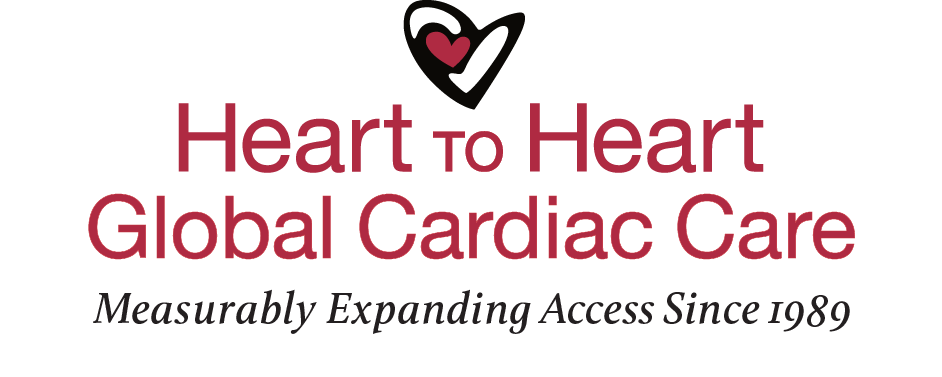Going Global: Site assessment in Paraguay
Paraguay’s first pediatric cardiac team We met with Paraguay’s only full-time pediatric cardiac surgeon, Dr. Patricia Egusquiza, and her team (shown above). We were able to see firsthand one of their many tangible accomplishments while visiting the University Hospital – a four-bed stand alone pediatric cardiac ICU.
On the ground in Paraguay Paraguay has been on the rise following a tumultuous recent history, marked by the War of the Triple Alliance (1865-70) during which the country lost two-thirds of its adult male population. The ensuing military dictatorship ended in 1989 when Paraguayans were able to return their country to democracy (source: Library of Congress). Pictured here: Paraguayan national flag, the flag of Vatican City, and a statue of the Virgin Mary.
The burden of heart disease in Paraguay Each year, approximately 1,400 children born with congenital heart disease enter Paraguay’s limited cardiac care system: among adults, 31% of annual mortality is cardiovascular-related, accounting for nearly 11,000 deaths annually. We estimate that there are approximately 1.5 million adults with acquired heart disease, 130,000 of whom live in Asunción.
Cardiovascular disease (CVD) is the leading cause of death worldwide, accounting for nearly 1 of every 3 deaths annually. Many people do not know that CVD can affect a life even from birth; every 30 seconds, somewhere in the world a baby is born with a life-threatening, but highly treatable heart defect. We launched our Going Global initiative so that Heart to Heart could expand its geographical reach to heal more hearts worldwide.
Paraguay is a central South American country of nearly 7 million citizens that was liberated from Spanish rule in 1811. Bordered by Bolivia, Argentina, and Brazil, the country is slightly smaller geographically than California. The nation’s capital, Asuncion, is home to half a million citizens, the nation’s only medical school, and serves as the hub of healthcare for the whole country. Today Paraguay boasts a 94% literacy rate and a young, promising population.
In April 2018, Heart to Heart Founder & Medical Director, Dr. Nilas Young, and Executive Director, Josie Everett, traveled to Asunción to discuss our self-sustainability program model with Paraguayan cardiac thought leaders. Hosted by Dr. Adrian Ebner, head of the cardiovascular department at University Hospital of Paraguay, Dr. Young and Ms. Everett were able to tour the cardiac units of three medical institutions and meet with several teams of physicians to discuss the expansion of cardiac care throughout the country.
In Paraguay, there is only one full-time pediatric cardiac surgeon in the entire nation. We were sincerely impressed and inspired by the dedication and ten-year track record of Dr. Patricia Egusquiza and her team (shown at left). Dr. Egusquiza’s pediatric cardiac team is aligned closely with Fundación Corazoncitos, a charity organization founded nearly a decade ago to help launch the hospital’s first pediatric cardiac program. Despite the fact that patient families are required to provide their own surgical supplies, nearly 80 pediatric open heart cases are already being performed each year. La Fundación helps young families meet the cost of purchasing supplies – such as sutures and implantable devices – so that children can undergo life-saving surgery. Still, the demand for care far exceeds current capacity, and we are determined to see how Heart to Heart can give this promising team a hand up to save many more children’s lives.
Before entering into a long-term collaboration, Heart to Heart’s conducts thorough U.S.-based research. Once we identify a high-potential opportunity, we then initiate site assessment trips which are designed to further determine the viability of developing a self-sustaining regional or nationwide system of cardiac care. Our first site assessment trip to South America took place three years ago, expanding our pediatric and adult programs to Peru. Our latest Going Global journey took us to Asuncion, Paraguay early April 2018.
Additionally, Paraguay has a high incidence of rheumatic heart fever resulting from its high poverty rate and limited medical access. Rheumatic heart disease (RHD) is endemic among Paraguayan children and adults, as it is in most of the developing world. Ultimately, patients with RHD require surgical or catheter-based intervention to manage valvular problems. The high incidence of RHD in Paraguay provides Heart to Heart with ample opportunity in the areas of prevention, diagnostics, screening, and treatment.
As Heart to Heart moves forward in Latin America to help develop new cardiac teams, we will share with you how you can continue to play a critically important role in saving the lives of thousands waiting for medical care. Stay tuned for parts two and three of our Going Global, Latin America updates.




